If you have scoliosis, you aren’t alone—up to 5,200 out of every 100,000 people worldwide are affected by this condition. It occurs as early as infancy but is most common in adolescence. Scoliosis is defined by a lateral curvature of the spine usually coupled with rotation, or the spine curving to the side and twisting slightly. Physical therapy is a proven and effective way to manage the pain and other scoliosis symptoms.
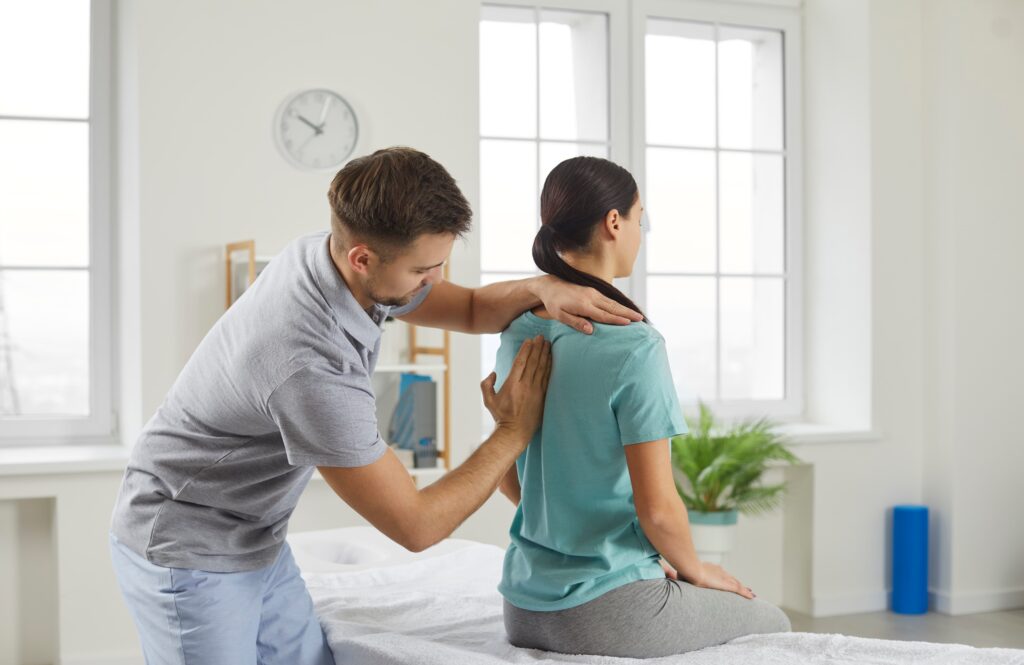
What Are the Symptoms of Scoliosis?
Scoliosis may lead to:
Degrees of Scoliosis Curvature
Not everyone has scoliosis that is symptomatic—the level of severity varies according to the degrees of curvature.
How Is Scoliosis Diagnosed?
To diagnose and assess the severity of your scoliosis, doctors and radiologists will use X-rays. The Cobb angle is one method of measuring the degree of curvature of the spine. After taking an X-ray, the doctor will draw lines on the spine to connect the most tilted vertebrae at the top and bottom of the curve. Then they measure the angle between these lines.
A spine with scoliosis will usually present as a S-shaped or C-shaped curve. The general shape or misalignment can usually be assessed externally by a doctor or physical therapist, but Cobb angles can only be verified through X-ray.
Physical therapists will use standardized tests and measures to help determine an appropriate physical therapy diagnosis during an evaluation. This helps identify any functional deficits and limitations that may be contributing to the patient’s symptoms.
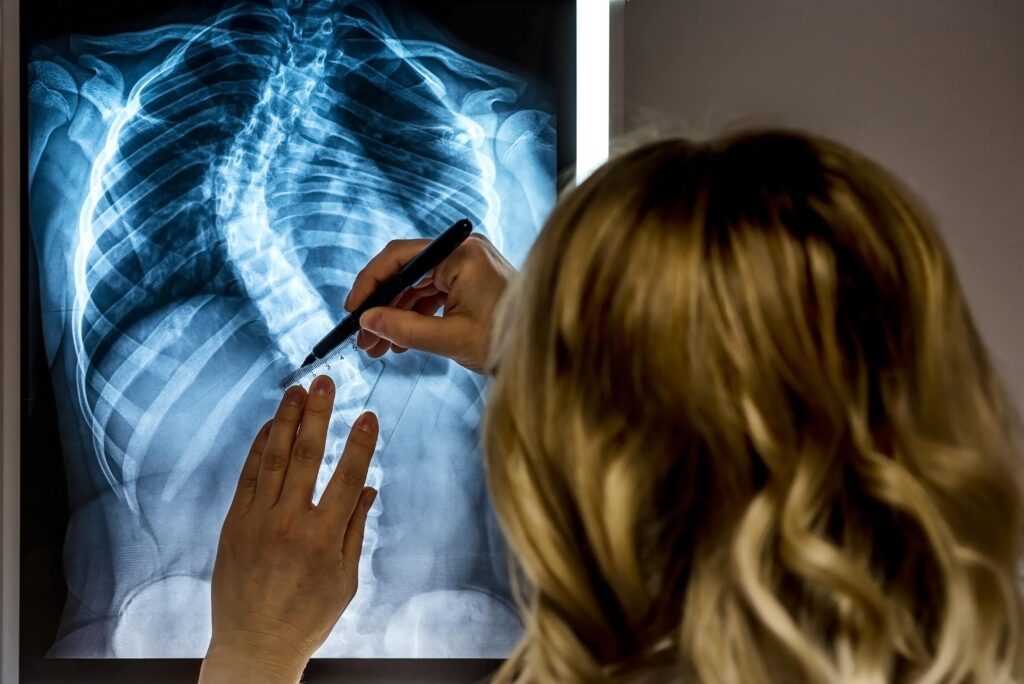
What Are the Treatment Options for Scoliosis?
The most common treatment options for scoliosis consist of bracing, physical therapy, chiropractic care, and surgery involving spinal fusion.
Chiropractic Care
Chiropractic treatment of scoliosis generally has mixed outcomes. Some studies have shown changes in Cobb angle progression and self-reported pain scores. However, there have been a limited amount of high-quality studies that support chiropractic care and its benefit on scoliosis, as shown in a systematic review from 2013.
According to this study, many people may experience a reduction in scoliosis-related pain initially, but then find it difficult to maintain that pain reduction without the need for frequent adjustments.
Bracing
When you opt for using bracing, you use custom-molded braces to help prevent the progression of your spinal curve. Studies have shown that bracing is effective in reducing the progression of scoliotic curves and avoiding spinal fusion. Bracing is often used when the Cobb angle is more than 25 degrees and when the patient is an adolescent.
The combination of bracing while undergoing physical therapy treatments has been shown to be more effective than doing either treatment alone. The success of bracing depends a lot on the patient wearing the brace for about 23 hours/day until skeletal maturity has been reached.
Spinal Fusion
Spinal fusion is the surgical option for patients who have spinal curves exceeding 40-45 degrees. However, the evidence doesn’t support a reduction in the experienced signs and symptoms of scoliosis following a spinal fusion. Based on a systematic review performed in 2008, there is a high rate of complications with spinal fusion in the treatment of scoliosis. They tend to consist of a long recovery process and contribute to limited overall spinal mobility.
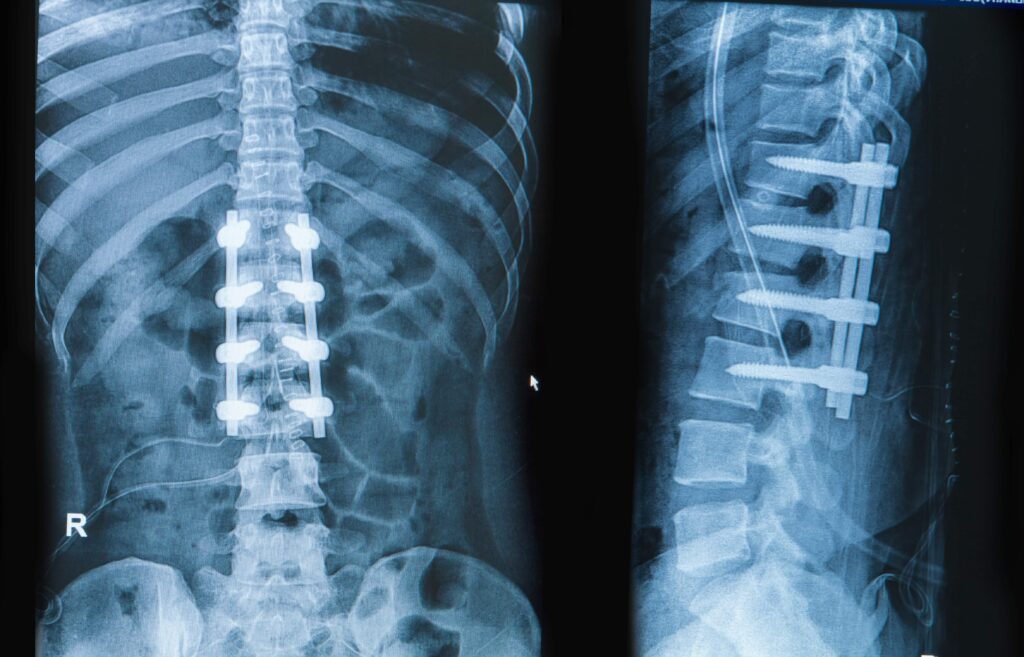
Physical Therapy & Scoliosis
Physical therapy treatment for scoliosis includes manual therapy techniques, core stabilization, postural education, postural strengthening, stretching, and body mechanics training.
Below are a few exercises that may be utilized in the treatment of scoliosis in a physical therapy clinic. Just remember, the best type of treatment method is created specifically for you after a thorough physical therapy evaluation.
Posture Correction
Pull your shoulder blades back and slightly lift your chest so that your ears, shoulders, and hips are all in line.
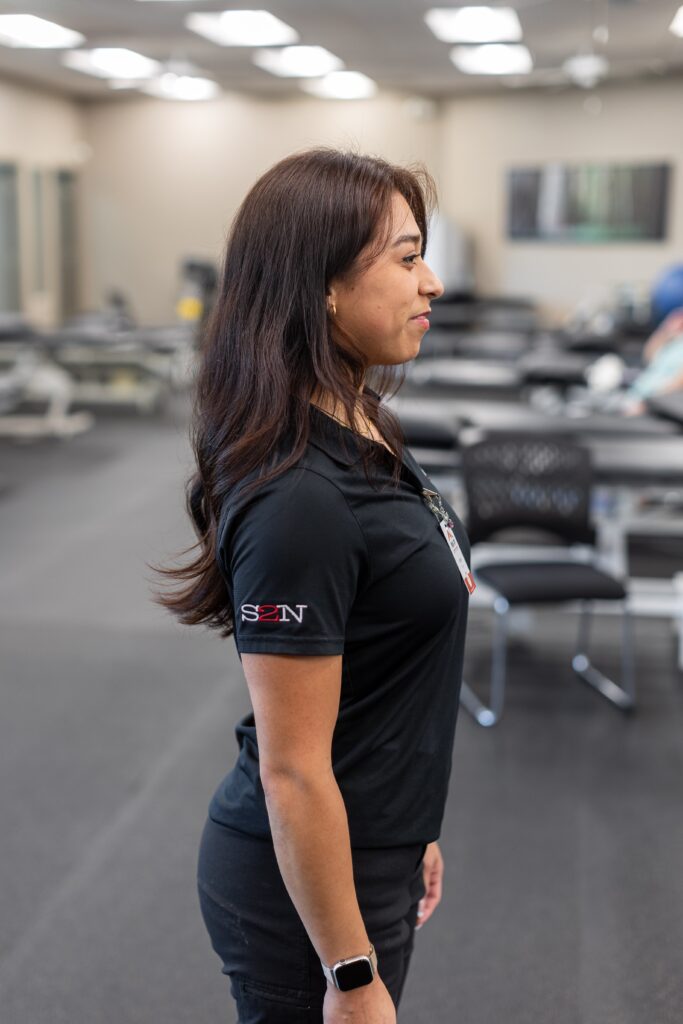
Bird Dog
Begin on hands and knees, draw in your belly button while keeping your back flat, then lift the opposite arm and leg. Hold this for two seconds, then switch sides.
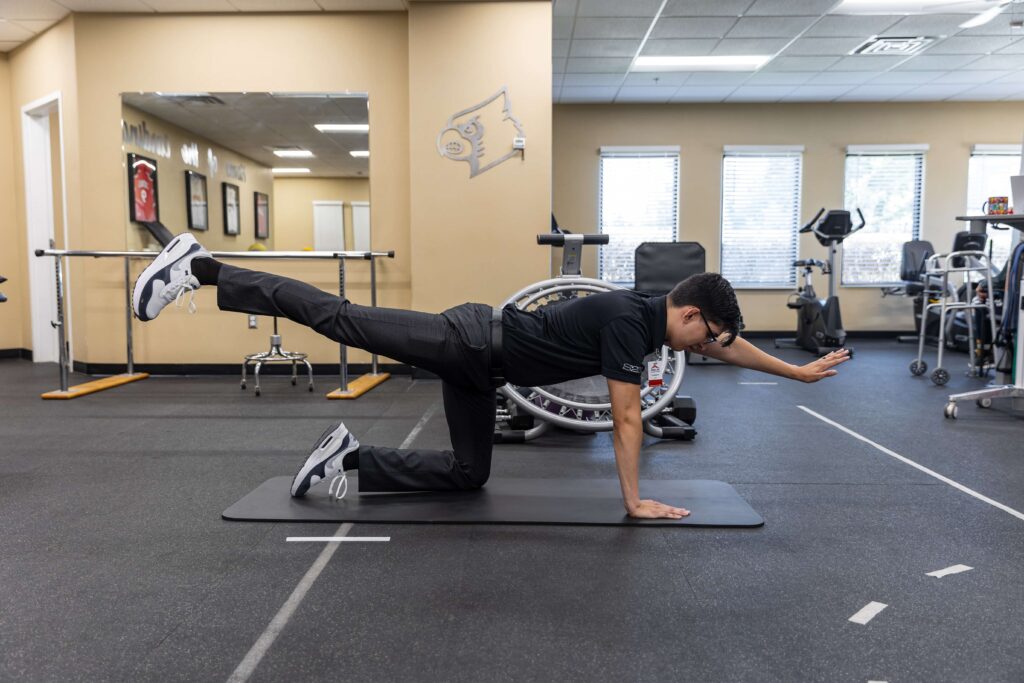
Dead Bug
Lie on your back and draw your belly button toward your spine. Then, lift your arms and legs and drop the alternating arm and leg. Hold this for two seconds before switching sides.
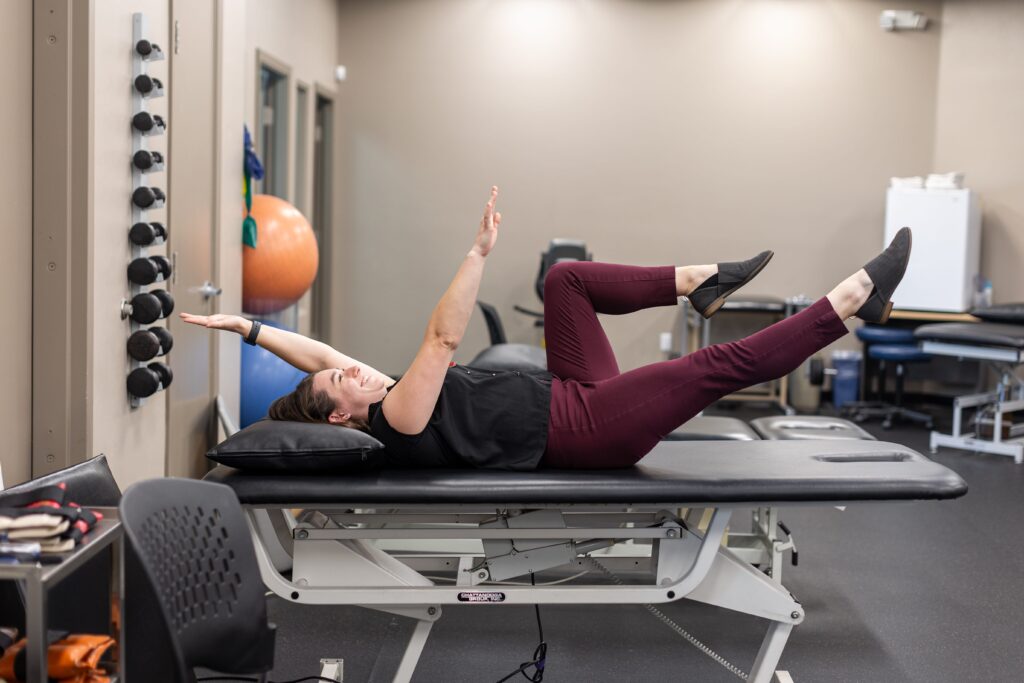
Lateral Trunk Stretches
Using a ball or while seated, reach your arm up and over to the opposite side. Hold for five to ten seconds and remain on the same side. The correct side will be determined by your physical therapist.
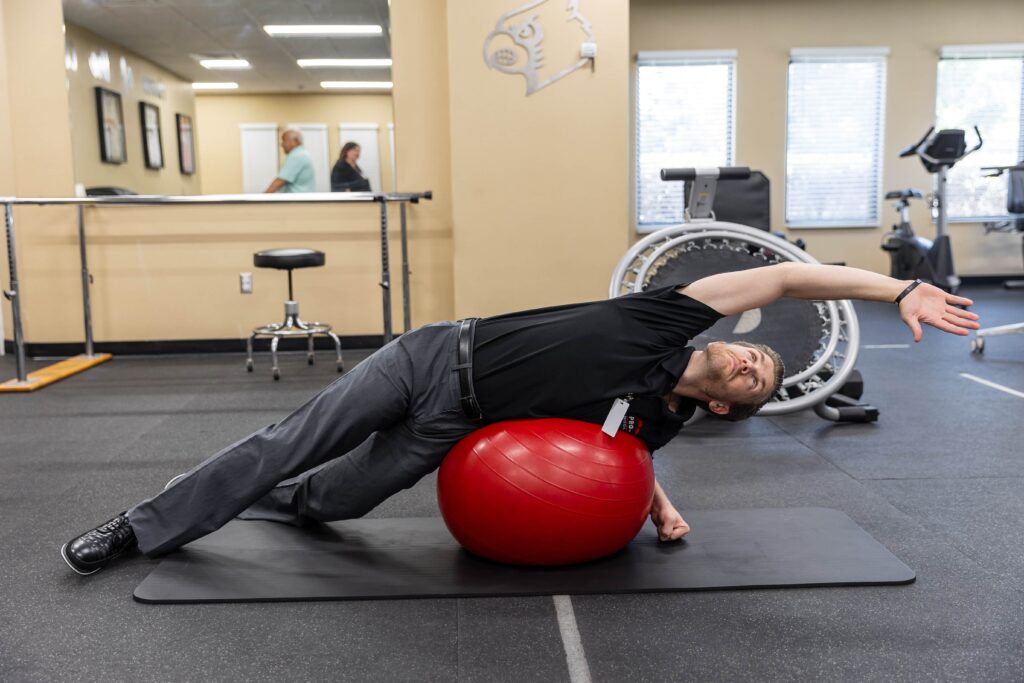
The Schroth Method
The Schroth Method is a popular method that physical therapists use to provide a customized, non-surgical treatment option for patients with scoliosis. This method involves specific exercises in all three planes of movement to treat the patient’s specific curvature. It focuses on the same principles of breathing techniques, postural strengthening, core stabilization, and body mechanics awareness to improve balance and stability of the spine.
This method is effective for both adolescents and adults. Evidence supports that this treatment brings a significant reduction in trunk rotation angle and pain, as well as improvements in respiratory function and overall quality of life.
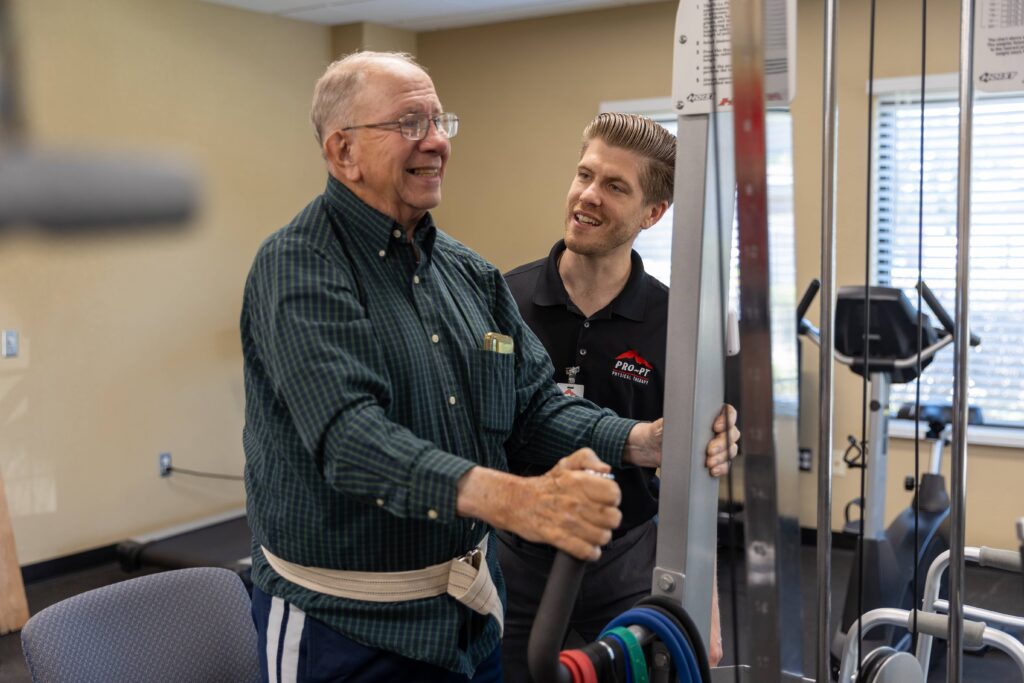
Living with Scoliosis and Physical Therapy
Overall, physical therapy intervention is one of the most effective methods to treat scoliosis. Many individual case reports show that people experienced reductions in pain, improved strength, and improved posture with physical therapy intervention.
A physical therapy evaluation performed by a skilled physical therapist at your local PRO-PT clinic will provide more insight on your type of scoliosis, and appropriate treatment method, and will begin your journey to recovery. Make your first appointment today.







